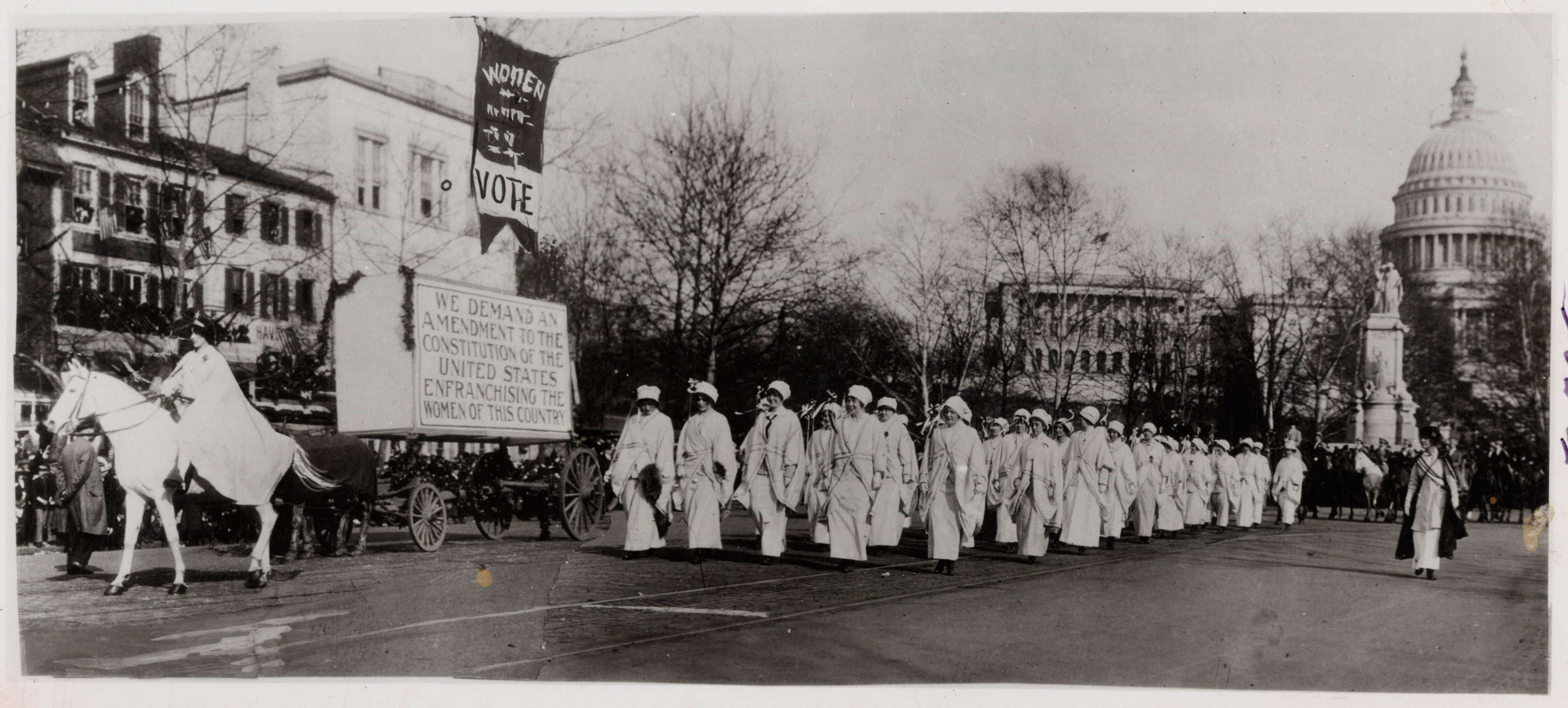Women Marching in Suffrage Parade in Washington, DC
3/3/1913
Add to Favorites:
Add all page(s) of this document to activity:

In the second decade of the 20th century, suffragists began staging large and dramatic parades to draw attention to their cause. One of the most consequential demonstrations was a march held in Washington, DC, on March 3, 1913, the day before Woodrow Wilson’s first presidential inauguration. More than 5,000 suffragists from around the country paraded down Pennsylvania Avenue from the U.S. Capitol to the Treasury Building.
It set a precedent for future protest marches, but also brought controversy. According to the National American Woman Suffrage Association (NAWSA), all women and men were welcome to march. However, march organizer Alice Paul attempted to exclude black women from participating because she feared white women would not march alongside them. Ultimately NAWSA forced Paul to allow black women to join the procession. Some women of color – such as civil rights crusader Ida B. Wells-Barnett and lawyer Marie Louise Bottineau Baldwin, a member of the Turtle Mountain Band of Chippewa Indians – bucked the attempt to racially segregate the parade by walking alongside white women.
The rowdy, mostly-male crowd watching the parade pressed in on the demonstration, at times leaving barely enough room for the marchers to get by. Many women were verbally and physically assaulted while the police stood by either unwilling or unable to control the crowd. Outrage over the violence resulted in a Congressional investigation into the lack of police protection for the marchers and increased sympathy for woman suffrage.
It set a precedent for future protest marches, but also brought controversy. According to the National American Woman Suffrage Association (NAWSA), all women and men were welcome to march. However, march organizer Alice Paul attempted to exclude black women from participating because she feared white women would not march alongside them. Ultimately NAWSA forced Paul to allow black women to join the procession. Some women of color – such as civil rights crusader Ida B. Wells-Barnett and lawyer Marie Louise Bottineau Baldwin, a member of the Turtle Mountain Band of Chippewa Indians – bucked the attempt to racially segregate the parade by walking alongside white women.
The rowdy, mostly-male crowd watching the parade pressed in on the demonstration, at times leaving barely enough room for the marchers to get by. Many women were verbally and physically assaulted while the police stood by either unwilling or unable to control the crowd. Outrage over the violence resulted in a Congressional investigation into the lack of police protection for the marchers and increased sympathy for woman suffrage.
Transcript
We demand an amendment to the Constitution of the United States enfranchising the women of this countryThis primary source comes from the Records of the U.S. Information Agency.
National Archives Identifier: 24520426
Full Citation: Photograph 306-PS-57-7357; Women Marching in Suffragette Parade, Washington, DC; 3/3/1913; Master File Photographs of U.S. and Foreign Personalities, World Events, and American Economic, Social, and Cultural Life, ca. 1953 - ca. 1994; Records of the U.S. Information Agency, Record Group 306; National Archives at College Park, College Park, MD. [Online Version, https://www.docsteach.org/documents/document/marching-suffrage-parade-dc, April 18, 2024]Activities that use this document
- The 19th Amendment and the Road to Universal Suffrage
Created by the National Archives Education Team - Women of Color and the Fight for Women's Suffrage
Created by the National Archives Education Team
Rights: Public Domain, Free of Known Copyright Restrictions. Learn more on our privacy and legal page.



